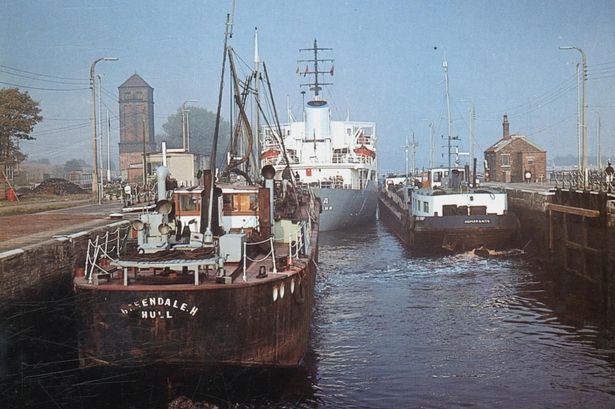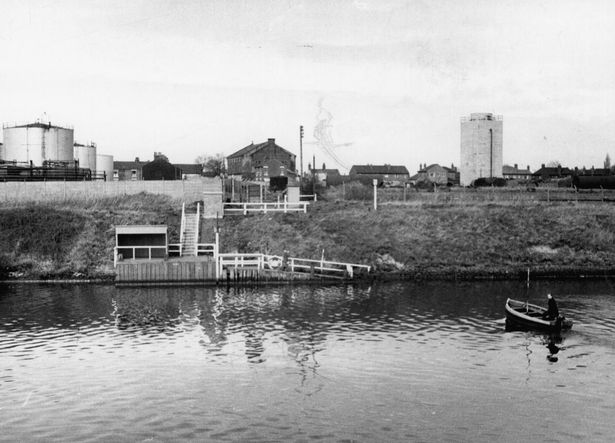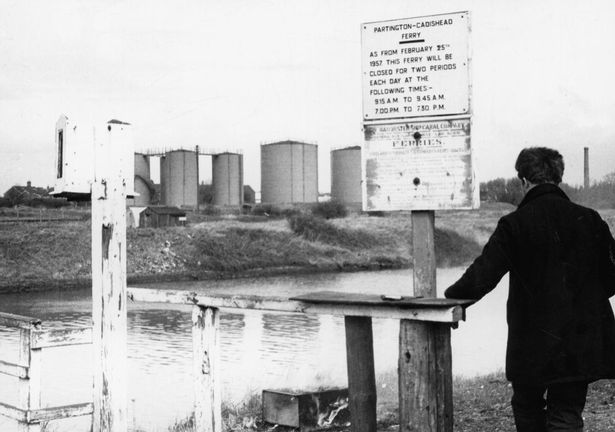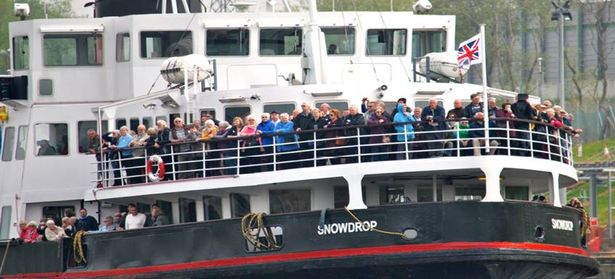A massive explosion rang out and rocked houses a quarter of a mile away Manchester Ship Canal, Irlam Locks in 1970.(Image: @Manchester Libraries and Local Archives)
Manchester Ship Canal, Irlam Locks in 1970.(Image: @Manchester Libraries and Local Archives)
It’s been 55 years since a terrible and tragic explosion turned the Manchester Ship Canal into a ‘river of fire’.
In the early hours of Tuesday, April 14, 1970, Bernard Carroll, a 27-year-old from Partington, noticed the strong smell of oil clinging in the air. He worked as a ferryman, transporting passengers across the canal in a 20-foot open boat.
Disturbed by the unpleasant odour, Bernard stopped his ferry service to alert the police. Peering into the water, he was alarmed to see a slick of oil near another boat, Bob’s Ferry, at the canal crossing between Bob’s Lane in Cadishead and Lock Lane in Partington.
Desperate to warn those aboard the ferry about the nearby oil spill, Bernard hopped into a nearby rowboat and began to cross the canal. It was the last time he was seen alive.
Join the Manchester Evening News WhatsApp group HERE
Before he could reach Bob’s Ferry, the oil vapour ignited and a massive explosion echoed throughout the borough at 5:30am. Houses up to a quarter of a mile away were rocked by the blast.
The canal was engulfed in a mile-long inferno, with flames reaching up to 60 feet high.
Emergency services responded, and nearby homes were evacuated while locals watched on in horror.
A detailed account of the disaster was reported in the Manchester Evening News later that day, Tuesday, April 14, 1970.
The journalist described how a long stretch of the waterway was “turned into a river of fire”.
Les Morris, aged 39, of Green Lane, was one of the first on scene.
He said: “There was a terrific explosion and I ran to the canal. Within a minute or two the flames had died down and I heard screaming.”
He described seeing the five men in the ferryboat, one of them hanging over the side.
“They were all badly hurt,” said Les. “One man was hanging on to the mast, screaming. He was still on fire.”
When the flames eventually subsided, the boats were retrieved. Bernard, who had bravely commandeered the rowboat and tried to warn the ferry crew, was found lifeless.
Five of the ferry’s passengers were rushed to the hospital with severe burns. They had dived overboard to escape the fumes and the flames before being rescued by police.
Three other passengers from the ferryboat were missing, but the aftermath of the explosion made it impossible for police to search the waters. It would be two weeks before their bodies would be found.
Robert Kilgour, one of the passengers rescued, tragically succumbed to his injuries in hospital a few days later.
While the cause of the blast was initially shrouded in mystery, locals speculated about the unusual smell and oil spill.
It was suspected, and later confirmed, that the oil had spilled from a tanker unloading at the nearby Shell chemical plant.
Just hours before the explosion, a Dutch-owned vessel named Tacoma was being loaded with 1,800 tons of petrol at Partington Coaling Basin.
Standard safety protocols at the time required two workers to observe such operations to ensure no petrol spilled out.
However, it was later revealed that the vessel had been left unattended for four hours.
 Manchester Ship Canal, Partington – Cadishead Ferry 1967(Image: @Manchester Libraries and Local Archives)
Manchester Ship Canal, Partington – Cadishead Ferry 1967(Image: @Manchester Libraries and Local Archives)
Two workers, who were subsequently suspended from duty, confessed to spending the early hours of the morning at a nearby canteen while the vessel was loading up.
While they were relaxing over coffee, 14,000 gallons of petrol flowed into the canal.
A definitive reason for how the fire started was never recorded. Still, some theories suggested it began after a passenger lit a cigarette while onboard the ferry.
During an inquest into the tragic events in June 1970, Coroner Leonard Gorodkin reportedly said: “We will never know just what caused the petrol to ignite and this is a most horrifying story.
 Man waiting for the Partington – Cadishead Ferry, 1967(Image: @Manchester Libraries and Local Archives)
Man waiting for the Partington – Cadishead Ferry, 1967(Image: @Manchester Libraries and Local Archives)
“As a result of this inquest I hope people will realise that safety regulations are not just bits of paper.”
The inquest found that Albert Wimbleton, 56, Brian Hillier, 18, Roy Platt, 29, Alan Cliff, 17, and Bernard Carroll, 27, all from Partington, tragically died as a result of misadventure.
Daniel MacAlister, George Morrell and Stephen Hunter survived the blast but were left with life-changing injuries.
In 2014, a memorial event was held to mark the 44th anniversary of the disaster, the Manchester Evening News previously reported.
Stephen Hunter, the only living survivor, was joined by over 230 people on a ship that sailed from Salford to the site of the accident.
 More than 230 people onboard a ferry that visited the site of the accident in 2014(Image: Hamilton Davies Trust)
More than 230 people onboard a ferry that visited the site of the accident in 2014(Image: Hamilton Davies Trust)
Wreaths were cast into the water during a two-minute silence.
“I was 17 at the time of the disaster, four weeks from my 18th birthday which I spent in Withington Hospital burns unit,” Stephen shared with the Hamilton Davies Trust at the time.
“I don’t remember much about the disaster, I try to put it to the back of my mind.”
In time, the ferry services resumed, but business never fully recovered. The ferry permanently closed in July 1993.
Local residents have since established the Bob’s Ferry Heritage Project to create a lasting memorial on both sides of the Ship Canal in the future.
An information board, supported by the project, currently stands on Bob’s Lane and Liverpool Road in Cadishead detailing the tragic incident.
Love Greater Manchester’s past? Sign up to our nostalgia newsletter here
